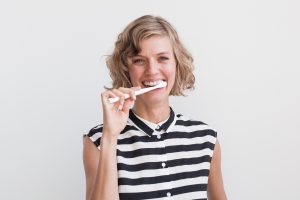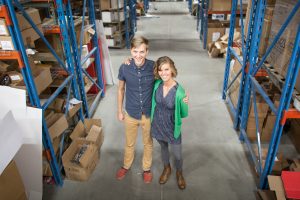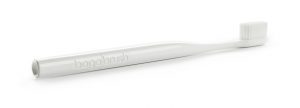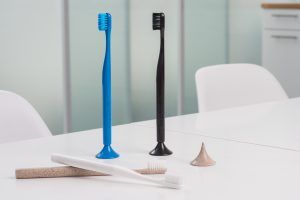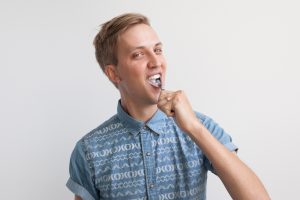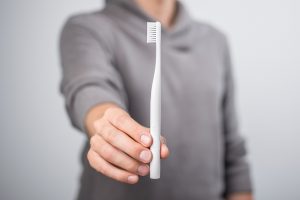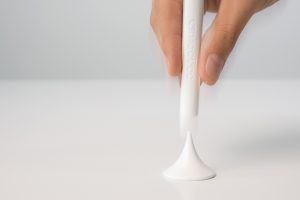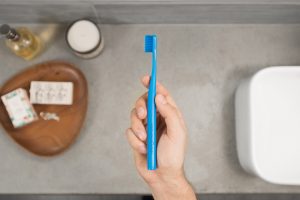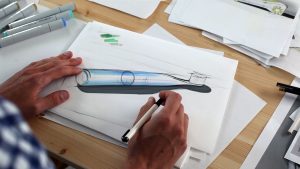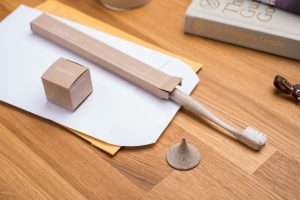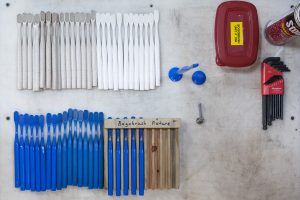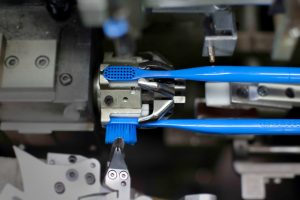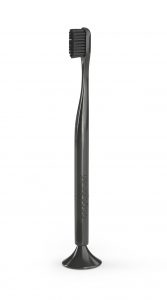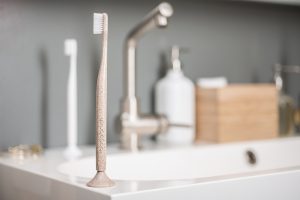S3: Bogobrush: Heather and John McDougall #83

Bogobrush: Heather and John McDougall
Hey there! This is Romy here for another episode of the Bonfires of Social Enterprise! On this episode, we are going to hear from a creative brother and sister team making toothbrushes for some good causes. Fun! And, of course, at the end, we have a great song from a Detroit artist….always one of my favorite parts of the episode.
For the full transcript – click below
Hey there! This is Romy here for another episode of the Bonfires of Social Enterprise! On this episode, we are going to hear from a creative brother and sister team making toothbrushes for some good causes. Fun! And, of course, at the end, we have a great song from a Detroit artist….always one of my favorite parts of the episode.
Let’s check in with Natalie Hazen on our Fun Fuel about toothbrushes….
This is Natalie Hazen, and I am bringing you the Fun Fuel for this episode.
When I think of teeth, my first thoughts go directly to food. That probably is not a good thing, because I really like food, but nonetheless, we need to eat, and teeth help with that process. I think of all the action that goes into eating such as biting and chomping and chewing which is actually a pretty remarkable process.
So how many teeth do we have? According to Authority Dental, We have 32 teeth including wisdom teeth with 16 on top and 10 on the bottom. And a human bite can generate a force of as great as 55 pounds on the incisors or 200 pounds on the molars.
Humans have quite the chompers!
Hope you enjoyed this fun fuel. Now on to the episode.
Thank you, Natalie! She is so hilarious. Okay, let’s listen in to my conversation with Heather and John McDougall
Romy: Alright, so welcome Heather and John McDougal from BOGO Brush to the Podcast Show!
John: Yeah, thanks for having us.
Heather: Hey, good to be here.
Romy: Yeah, so I’m excited to introduce you guys to our listeners. I’m so happy to have you on the show. You’ve got a different product for us, and we haven’t had a brother and sister team on yet, so this is really fun.
So let’s tell our listeners about BOGO Brush, what’s BOGO Brush about?
Heather:
BOGO Brush, it’s a toothbrush! It’s the first toothbrush you’ll actually care about, is what we like to say about it. It’s an eco-friendly toothbrush, made entirely in the United States, and whenever you buy a BOGO Brush, we give a toothbrush to someone in need.
Romy: Oh okay, and who is that typically? What’s a typical recipient of a BOGO Brush?
Heather: Yeah, so we partner with low-cost health clinics in the US. So we partner with a clinic, here in Detroit, in Minnesota, and one in North Dakota, and basically, we make donations of toothbrushes to them, and they distribute the brushes to the people who are in need of them. We leave that distribution to the experts, the people who are closest to the folks who don’t have access to as much oral care as others.
Romy:
Super smart. So before we get in on the toothbrush, because we’ve had a chance to get together and look at this toothbrush, it’s really amazing. Let’s take everyone back of how you guys originally just even decided to do this.
John:
Yeah, it’s been quite the journey for us. We always kind of jokingly say that we were subconsciously born to design toothbrushes, so a little disclosure, our dad is actually a dentist. So we grew up floating around a dental office, sort of surrounded by that world. Neither of us thought we would ever do anything remotely close to dentistry.
I went to design school, to study how to design cars, and Heather went off to law school, and toothbrushes were the last thing on our mind. But as we were exploring the world, and sustainability, and what products we thought the world needed, we just kept coming back to this idea of a toothbrush. You know? It’s something that, you wake up, you use every morning, and you use every night before you go to bed. It’s sort of this moment of consciousness that you have. We thought if we could bring environmental and social awareness into somebody’s daily routine, in those moments, it could be a part of a much bigger change in people’s lives and in the world.
Romy:
Nice. Okay, so you guys had the idea, and said, “Alright, we’re gonna make a toothbrush.” How did that all start to happen?
John:
Yeah, so a lot of Google.
Romy: No, right?
John: I think just like any beginner entrepreneur, there’s a lot more questions than there are answers. We really started exploring just what was wrong with toothbrushes today, starting that design process with everything from the form, you know if you look at a toothbrush today, there’s a lot of different plastics and rubbers, and grips, and motors, and all of that leads to a product that is completely un-recyclable, so we knew we wanted to address that.
On top of that, all those grips are designed so that you hold the brush in one position in your hand, and if you have a toothbrush, you really can’t manipulate your wrist, while holding an object in one position. You need to spin it like an artist holds a paintbrush, or even a dentist holds a professional dental tool. So we created this pure cylindrical form, that was really the first in the industry for a toothbrush and really created this minimal silhouette for the product.
From there, we had seen the numbers growing up in the oral health world; we knew there was 80 million people in the US, that didn’t have adequate access to oral healthcare. So we knew that was a problem that we wanted to help be a part of a solution for. So for us, that meant the buy one get one model, and a way to start addressing that solution and bring awareness to those problems.
Romy:
So let’s keep going about the toothbrush. Let’s talk all about the toothbrush, what it’s made from, ’cause I was really fascinated by the detail that you guys went into. Let’s go there. We of course, for our listeners, we’ll have pictures under the cover art on the website. So you guys can get pictures of the actual toothbrush, but for those that might not look it up, let’s talk in detail about it.
John:
Yeah, so as we said, we kind of landed on this pure minimalist form. That came through a lot of different studies we had. Wooden dowels, and clay models, and cutting up toothbrushes, and different pins, and attaching heads and handles to all kinds of things in the earliest of days. When we first started, we actually made the brush out of bamboo. So it was kind of this machined bamboo finish that ended up, that’s a whole other story we can get into. All kind of issues with quality and scrapping on that, so that forced us to recalibrate and refocus on manufacturing here in the US.
So the handles that you’ll see on our website, there’s really two selections. There’s a bio-degradable collection, which is currently made with flax, and then there’s a recycled collection, which is a nice smooth gloss finished plastic, that is completely recycled, and recyclable, and those come in a variety of different colors. Yeah, it’s really just a pure, simple form.
It comes with a stand, so you can really keep your toothbrush clean and dry, upright, we always like to think of it as, “Standing proud on your bathroom counter.” Sort of elevating the toothbrush from something that people traditionally throw in a dirty cup or a dirty cabinet, into something that you really proudly display in your home.
Romy:
It is a little piece of art, I gotta admit.
John: Thank you.
Romy: It does look like a modern piece of art. Alright, so how does it help with oral care?
Heather: In a few ways, right? It’s important that everyone uses their toothbrush, every morning, and every night, so generally, for the folks who are BOGO Brush customers, our approach is to create a toothbrush that people care about. Generally, that’s what helps people use their brush, is something they’re interested in using. So we’re taking that approach of the emotional and design values that people will care about their product. So every morning and every night, they’ll see it, and feel interested in brushing their teeth, and research shows that brushing your teeth is one of, if not the most important things for oral health, which oral health is a gateway to so many other overall body health things, and that research is coming out more and more every year, from heart disease, and just a whole plethora of health issues.
For everyone, brushing your teeth is super important, and hopefully, we can make that a little but cooler sounding over time. But that’s also, like John said, “The 80 million Americans … ” Right? That’s just 80 million in the United States alone, who don’t have adequate access, and we are providing brushes to those people. Not 80 million yet, but someday maybe. But it’s also just raising that awareness. Knowing that someone in your community is either in need of something as simple as a toothbrush, or for the folks who are receiving them, they know like, “Hey, I’m part of a community, and I’m feeling value.”
Overall, feeling valuable is also a really important part of taking care of your own health. So, kind of this whole community approach to encouraging everyone to take care of themselves.
Romy: Yeah, and I think that leads us beautifully into the social impact aside of this, and I would like to come back to the revenue model, piece of your business, that you guys have chosen to land on, but let’s stay on the social impact side for a minute.
What do you guys envision as the impact or the outcomes that you’d like to make? ‘Cause we know that, that statistic that you just shared about the 80 million. It’s really vast and big, what would be, I guess a win, at this early stage for you guys, in terms of social impact that you could make?
Heather:
I think maybe even aside from a specific number, I mean obviously the more toothbrushes we’re able to give, the better, so we’ve already given several thousand away, and we just want to keep on going with that. Building and building of course, but even more, I think, at least from my perspective, a win is when we’re able to recognize by …
Heather: To be kind of recognized by a community. Our brand recognized by health clinics and things, and we come in, and we can do events and really get to know the people on all sides of the [Bogobrush 00:10:15] community, and I think to me that recognition and watching all sides of the buy, the give, the design all kind of come together. And that’s maybe a little bit ambiguous, but I think really being able to watch and see some kind of trackable and noticeable impacts that it’s having on everyone’s lives.
John:
Yeah, just I mean, beyond like you said, beyond the tooth brushes that we’re giving. It really all comes back to that shared moment every morning and every night that whether you bought the brush or it was given to you at a health clinic, you have a well-functioning beautiful toothbrush that you can use every day and that’s gonna affect your personal health, it’s gonna affect how you go out into the world, and it’s going to hopefully trickle down into a lot of different things. It’s the social impact of people’s health, but it’s also knowing that you’re not sending a toothbrush to the landfill when you’re done. It’s knowing that you’re buying a toothbrush that was made in the USA. So you’re really helping your community in a lot of ways, from the neighbor down the street to the environment around you, to the jobs in your community.
Romy:
Yeah, powerful, powerful. By the way, you mentioned early on that your dad is a dentist. Is your dad still living?
Heather: Yes.
John: Yes. He is. [crosstalk 00:11:56].
Romy: Yeah, does he like this?
John: Yeah, he’s a huge fan. He’s a big supporter for us. He’s still out there fixing teeth.
Romy:
Okay. So he gives the dentist, the professional endorsement I suppose?
John: Absolutely.
Romy: Well, that’s good, that’s good. I suppose we needed to circle back on that, how he felt about this. Do you ever see a future of placing some of your distributions through some of the dental offices, or are there barriers to that?
John:
Yeah, that’s a really good question. Yeah, it’s definitely … When we first got started, I think most of us think, “Oh, where do most people get their toothbrushes?” And for a lot of people, those six-month checkups at the dentist and that’s really the only toothbrush people get. Which really isn’t enough, you really should be replacing your toothbrush every three months for it to really remain its proper efficacy and all of that. But yeah, we’re really interested in distributing through toothbrushes. The challenge for us, starting out, is that companies like Oral B and Colgate, they’ll go into dental offices and basically give their toothbrushes away at cost for them, with their massive operations. They’re selling toothbrushes to dentists for 10s or 20s of cents, which is completely undoable for us.
Romy:
Oh sure.
John: So there’s definitely some dentists that have bought toothbrushes from us that are really passionate about the issues that we’re kind of promoting, but in order for us to kind of gain mainstream appeal in that market, it would require really, really significant scale of our operations and [dress 00:13:51] reduction in our costs.
Romy:
And I think people are willing to pay more if they know something’s being given away. I don’t think people are that sort of blind to the math of all that. They know it’s either mass produced and it’s going into a landfill like you said, kind of cheap versus quality. And that there’s a social mission attached. I think people understand that. I think there’s been an exceeding in the marketplace of social enterprises that share some of their resources, like a buy one give one. If you guys are or a percent of the profits goes to a regular cause, that type of thing. I think people are used to that now. 10 years ago, that was a bit of a new innovative concept. I think now that’s sort of a norm, and so your timing is better I think, to grab the general public.
So let’s go there. Let’s go to the revenue model. Now is it more of a subscription type thing? Or is it just buy one at a time? How does that work?
Heather: Yeah, we offer both options. So customers can come to Bogobrush.com, and they can choose to subscribe for Bogobrushes, and we give our customers the option of choosing how frequently they want to receive their brush. So right now, you can choose between every two, three or four months. Just recognizing, right, some people go through their brushing habits, cause them to go through toothbrushes more frequently than others. So the subscription is definitely a big part of what we’re working on, helping make it really convenient and easy to keep track of how old their toothbrush is by just letting it show up at the door, and they don’t even have to worry about it anymore. But we definitely do offer people to buy a one-time purchase for their brush. And also people can go to boutiques. We sell at a lot of boutique retail shops across the US and actually in a few places around the world. But yeah, hoping that that subscription is really what takes off, and for people, we always want them to know that they can sign up for a subscription and they can cancel anytime right?
Romy:
Mm-hmm (affirmative).
Heather: We’re not trying to lock anyone into something they’re not having a good experience with. But so far, we haven’t had that kind of response. People seem to love it, and it’s going well.
Romy: Yeah, well subscriptions are sort of convenient these days.
John: Yeah, totally.
Romy: We’ve become a little bit of a subscription economy, and if you don’t have to lock yourself into stuff, I find at least myself, we’re sort of willing to try stuff, you know? That’s good. Well great. We’ve kind of covered all the basics of what your brush is and why you’ve done it. Let’s maybe talk now about some of where you are in the stage of your development, what some of the … I don’t know, maybe surprises or challenges that you guys faced, what you’re looking to do now.
John:
Yeah. I think we’re at a position now where, you know, it’s taken us years to get to the point where we finally have a product that the quality is impeccable, and we can make reliably. And that was a big hurdle for us to get even to the point where we are today. I said we started with bamboo, which we kind of thought was a sustainable material and it is in a lot of ways, but what ended up happening was we had to make … The bamboo industry and the bamboo basically toothbrush industry is all overseas, and so that was kind of a drawback for us, but we pushed ahead with an initial order. And once we moved from doing prototype runs of a few hundred at a time to a massive order of say 10,000, the quality just fell off.
We ended up having a scrap rate of over 50% when we tried to bristle those handles, which was devastating for us on a number of accounts. One, obviously financially to lose that inventory, but also from a sustainability perspective, you can’t afford to have 50% of your materials going to waste and have a sustainable product.
Romy: Right.
John: That was just a devastating day. I remember I was here in Detroit, but Heather was at the factory in Wisconsin just watching these toothbrushes getting kind of obliterated in the machine.
Heather:
Yeah, it was like watching our little wooden children.
Romy: Aw.
Heather: But we powered on, and when we were at that stage, what we did to kind of fundraise, was a pre order campaign. So we kind of build our own version of Kickstarter, right? Built our own website, did all that. We were selling subscriptions at that time, and kind of the blessing in disguise I guess is we had all these subscribers. We had hundreds of subscribers who still needed their subscription fulfilled. We had enough inventory from that first round to fulfill a couple rounds, but it really forced us to keep looking for another option to make Bogobrush a reality.
That led us to the suppliers we have today, and kind of the little ironic twist, I guess, if that’s the right word. But the suppliers that we use today of this kind of biodegradable material they were not … They weren’t making that material when we first started trying to design Bogobrush. So it’s like, it all led us to our US supply chain and feeling so confident in our product and our partners. Yeah, absolutely. I think now we’re at this … We’re ready to scale, and I think [inaudible 00:19:57] with entrepreneurship or maybe life, I don’t know. But it’s all like chicken and eggs. So we’re at this point where in order to-
Heather: … chicken and egg. We’re at this point where in order to meet the demands on the scale that larger wholesalers have, like, say, Whole Foods, we need investment into our production system, but, before we can really kinda close some of these deals with those types of retailers, we need to have a confidence that we’re going to be able to produce it at those prices.
So, it’s like, getting the investors on board and getting the retailers on board for that sort of scale or I guess it’s maybe we get 10,000 subscribers tomorrow. That’ll do the trick, too. I think that’s kind of where we are. We’re working with some good partners. I spoke to our- using our networks to help us go out and get that funding to upgrade our production, and we’re looking forward to what that will lead.
Romy:
There’s always so much more to the manufacturing side, or even sometimes the supply chain side, that I think people realize, and it certainly can take a minute. I mean, I think you guys have been at this, for what, for maybe six years, maybe? Five … six years, or, how long?
Heather: Roughly five years, I guess.
Romy: Yeah, I mean, I just want our listeners to understand that cause sometimes they get frustrated and they’re like, “Ugh, it’s taking so long.” It’s really common to take a minute like this because unless you’re ramrodding something out, you really gotta watch all of these phases and it takes a bit to put them together when it’s not a tech app or something really … that’s immediately scalable.
When you have hard products, and you have people involved or something living, I like to say something living; people, animals, plants. When you get those involved, they’re not robotic, and they don’t always behave the way they think they’re going to, so, shenanigans can happen. And that kind of forces the timeline out a little bit, but it’s okay because you end up like you said, John, with a really beautiful product, and then it just becomes a finding those right partners.
[00:22:00] Your example, we just want to encourage everybody else to stay with it, because, that old saying, “Time heals all wounds,” I think time helps production, too.
John: Yeah.
Heather: Mm-hmm (affirmative)
Romy: Yeah.
John: Yeah, it’s … yeah, it’s definitely been this quite a wild journey. Anyone that starts a business like this, you have to have a certain level of naivete just to think that you can achieve something in a short amount of time.
Heather:
Mm-hmm (affirmative)
Romy: Yeah.
John: But, the lessons that we’ve learned along this path, to get to where we are, are just completely invaluable and obviously, if we were to start again today, we’d yeah, sure, it wouldn’t take us five years to design the beautiful toothbrush. I wouldn’t trade that time for the things that we’ve acquired, sort of then, like, a Masters and a Ph.D. in real life of how to make something. How to push through obstacles. It really is, and like you said, [inaudible 00:23:20] for the listeners. There’s never a time where it seems like, “Oh, everything is going to be perfect, and we have all the answers, and we can make our product for a price that everybody wants in a way that looks beautiful.” There’s always these decision that every day of, “What do we do with this? What do we do with that?” You just have to kind of keep moving forward with your best intentions. At least, from what we’ve seen, it keeps us moving forward and closer to our dreams.
Romy:
Yeah, that’s a good word, and it’s a word of encouragement, too. What are you guys kind of … What would you say to other people about looking for partners in that in very early stages when you’re not really sure what you’re looking for? What advice, I guess, would you give about looking for manufacturing suppliers and partners?
John:
I think, for us, it’s the relationships are honestly probably more important even than the obvious capabilities. We could call a toothbrush factory in China. We could have done that and had toothbrushes made in probably a much shorter order, but, the relationships that we have with our supply chain, here in the US, are worth so much more because there’s always going to be these little issues, you know, like, “Oh, there’s a defect in the way that the plastic is curing in the mold,” and having a relationship and knowing the name of the person that’s running the machine and being able to call them up on the phone and being like, “Okay, like, what if we do this? What if we do that? Um, what do you think about this, this, this? Let’s find a solution,” those things are almost impossible when you’re dealing with overseas manufacturers or with manufacturers that you don’t have a good personal relationship with.
We’ve been fortunate that we’ve been able to find folks that, even though we’re a small company, a startup with low volumes, they’ve believed in our mission and they’ve believed in what we’re trying to do for the world to the point that they’ll actually devote time and energy to solving those problems. I think, for us if we were just building another widget, another toothbrush with no meaning, with no purpose, I don’t think our partners would be as bought in or as involved in trying to find the solutions that they have.
Heather: I think, and that with that, you can getting started is asking questions. I know that there were times, and are times, where I’m speaking for myself, at least, hesitant to ask something, but I do think more often than not, I have [inaudible 00:26:17] and I have just asked and that’s helped us learn, that’s helped us discover what it means to have a good relationship. I think you just keep going. Trust what you’re looking for, trust the quality you’re looking for. Maybe it’s different for everyone. Maybe our quality standards are super, super high for something, or whatever. That’s not necessarily right or wrong with that, I guess.
Trust that and keep going because, I think, even when we’ve had some of those, at least with production, [inaudible 00:26:53] stumbles and whatnot, because we’ve kept going and stayed true to what we’re doing and continuing to ask, “Is this possible? Who can help us do this?” Then when we find those partners, they can look back, and they see our history and our story and say, “Wow, these people really are committed to finding good solutions and to learning.”
So, just asking those questions and kind of getting over any level of hesitation or fear you have that maybe the vision you’re looking at isn’t possible, just keep going on it because that’ll all build up to the confidence that your partners will have in you.
Romy:
That’s such a good word. Thanks for that. Was there anything funny along the way, so far, that made you guys laugh or scratch your head like, “Oh, wow, we didn’t see that come in there.”
Heather: Oh my gosh.
John: I remember at one point in time, we won’t say any names or anything, but I remember we were trying to figure out if we could machine a piece of bamboo in the US. And Heather, she can tell more than I can, she ended up on some road trip with these random dudes to some CNC tooling convention in rural Illinois or something like that.
Heather: Yeah, looking back, I’m not quite sure what I was thinking. They were definitely interesting characters and were preparing for the apocalypse, and it was entertaining. They were harmless towards me, but, that was definitely one of those, like, “What in the world?” I learned a whole lot about robots and machines that weekend, though. [crosstalk 00:28:43] works out.
Oh my goodness, that’s awesome. Alright, well, what’s in your immediate future right now? What are you guys working on in these next 12 months? What’s in your forefront right now?
Heather:
Well, really soon, we’re going to be starting to launch, but test, a kind of small scale testing, um, a referral program. Folks can come in and refer their friends to join Bogobrush subscription or purchase products, and they’ll be able to receive basically cash back on that. Kind of like helping to grow the Bogobrush family. That’s going to be rolling out super immediate. But, kind of building on that, we’re just continuing to test our marketing, explore more of who are our customers, really. What are they interested in and how can our story resonate with people. Expanding that, updating the website kind of stuff. Expanding into the next six to twelve months. Looking at other products. Kind of expanding the Bogobrush collection in a few directions. And then funding, of course. We’re aiming towards, in the next month or two, actually, to really be doing a lot more pitching and raising funds for updating our production.
Romy:
Yeah, that’s great. There’s always something to be raising money for like you said. There’s always the three. It’s like, upgrading, you’re trying to raise money and get customers and somehow keep it all going, but, I just want to say, you guys are doing an amazing job and anyone else out there that’s in this same place, stay encouraged, stay at it, because time does help you make a market, it helps you have staying power and sustainability. A lot of people come along and look at track records, what’s your persistence and all that. We obviously work with a lot of impact investors, so that’s one of the first questions, “How long have then been at it? Do they have persistence and strength?” Obviously, you guys have a nice track record of that.
It’s really, really good. Well, how would anyone who’s listening reach you on your website, social media, all those things?
John: First, an obvious one is our website bogobrush.com, so, b-o-g-o-brush.com. And then, of course, you can find us on all the regular social media ways; Instagram, Facebook, @bogobrush, #bogobrush, all the above.
Heather:
If you want to reach John and me personally, you can say so on any of those channels, and we’ll definitely get it, and we’ll follow up with you.
Romy: Alright, great. You guys, thank you so much for taking time to do this out of your day. We want to circle back with you and keep kind of a documentary of what’s happening with you and your business here at Bogobrush if that’s alright.
John:
We’d love that. Thank you so much for taking the time to chat with us and helping to hear our story.
Romy: Yeah, yeah.
Heather: Yeah, thank you.
Romy: I can’t wait to see what happens next.
Fantastic and interesting conversation with Heather and John. Thanks for all of the time you guys are taking to make your company and products so thoughtful on all sides.! Check out their website everyone for some cool pics of these toothbrushes and a way to purchase them, of course.
Now on to the grand finale of our episode each time, please meet Detroit artist Drew Shultz. This artist and song has been curated by our friends at Assemble Sound. Here you go with Drew’s song ‘Take It Slow.’
Until next time, keep those bonfires burning!
Close
Website for Bogo Brush
https://www.bogobrush.com/
More Links
Jump over to the website for the podcast at www.bonfiresofsocialenterprise.com
Give us a question to the mailbag!
Find us on Facebook and Twitter @bonfirespodcast
Find more about Gingras Global at www.gingrasglobal.com and Facebook of Gingras Global and Twitter @gingrasglobal

